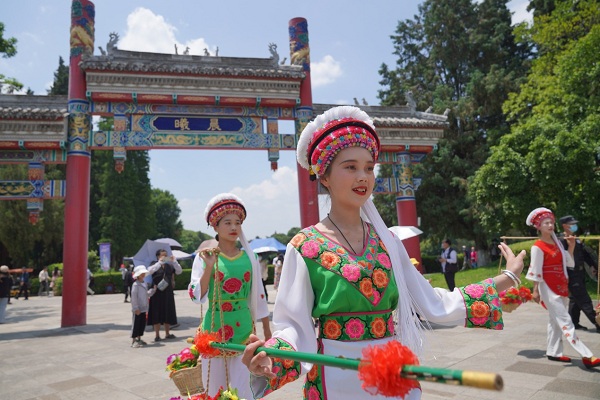Diverse culture makes Yunnan more attractive
Located in Southwest China, Yunnan province is China's gateway to Southeast and South Asia. It borders more countries than most other provinces in China.
Yunnan is famous at home and abroad for its unique plateau scenery, tropical and subtropical environment, and vibrant ethnic customs.
A number of tourist attractions featuring high mountains and valleys, modern glaciers, plateau lakes, stone forests, karst caves, volcanic geothermal energy, virgin forests, flowers, cultural relics, traditional gardens, and ethnic customs have been built.
The province possesses 134 A-level tourist attractions, and its six cities of Kunming, Dali, Lijiang, Jianshui, Weishan, and Huize are rated as national historical and cultural cities.
It is also home to eight national historical and cultural towns and villages, 14 provincial-level historical and cultural towns, 14 provincial-level historical and cultural villages, and one provincial-level historical and cultural block.
The Old Town of Lijiang and the Honghe Hani Rice Terraces are included on UNESCO's World Cultural Heritage list, while the Three Parallel Rivers of Yunnan Protected Areas, Shilin karsts, and the Chengjiang Fossil Site were included on the World Natural Heritage list.
Yunnan is the province with the largest kinds of ethnic groups in the country. In addition to the Han ethnic group, it boasts 25 other ethnic groups with a population of more than 6,000, including Yi, Hani, Bai, Dai, Zhuang, Miao, Hui, and Lisu.
Due to its rich ethnic culture, Yunnan is home to many national intangible cultural heritage items, including Water-sprinkling Festival of the Dai, the Torch Festival of the Yi, Bai tie-dye, and Dongba paper-making of the Naxi.

People dressed in Bai traditional costumes in Minzu village, Kunming, capital of Yunnan province welcome tourists. [Photo/IC]
All rights reserved. Presented by China Daily. 滇ICP备12004993号-2








